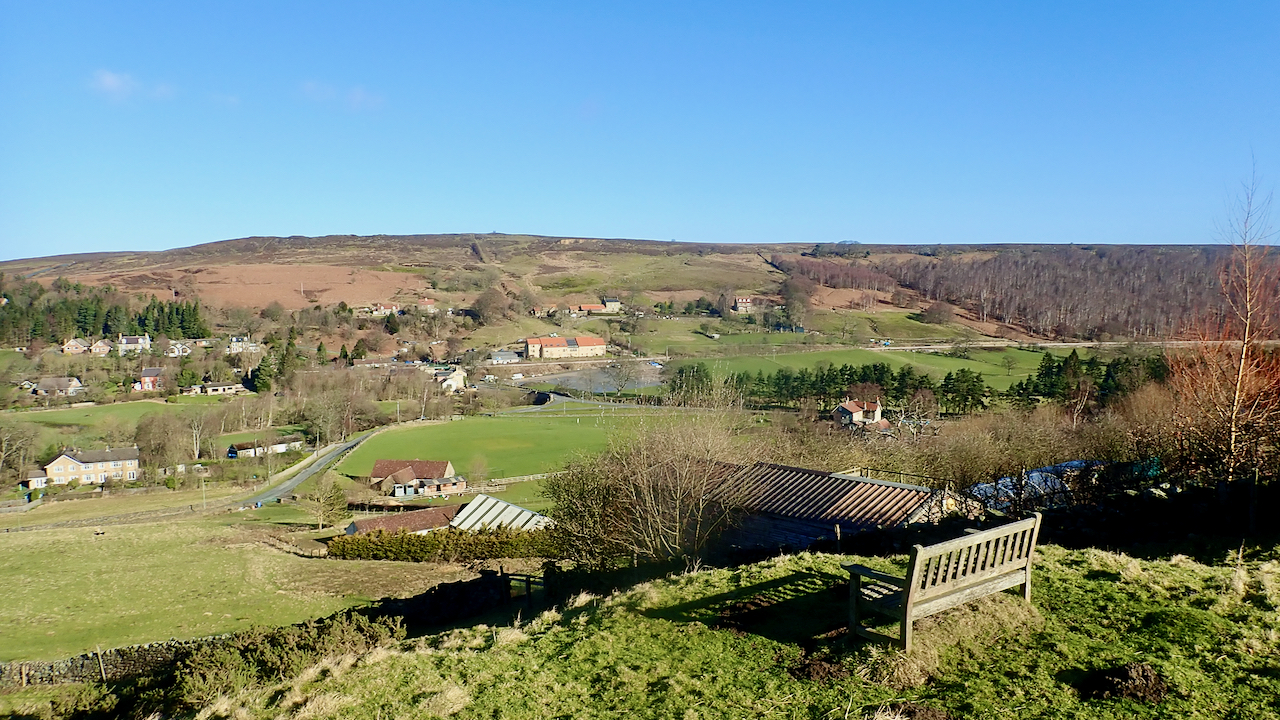See the old tramway incline up to the moor edge on the far side of the valley? I walked up it two days ago on my way to Freebrough. Here, from across the dale at High Castleton, it’s quite obvious. It leads to a complex area of disused quarries, with ponds, crags, re-entrants and spurs.
Silica-rich Moor Grit was the object of the industry. This sandstone is a member of those Middle Jurassic sedimentary rocks known as the Ravenscar Group. All are typically derived from sand, grit, and sandy shales but Moor Grit or White Flint as Elgee called it, is unusual in that the quartz grains are cemented together by silica instead, as is more usual in these moorland sandstones, iron oxides1Elgee, Frank. “The Moorlands of North Eastern Yorkshire”. London 1912.
The extracted stone was lowered down the self-acting incline to a crushing plant in the valley bottom close to the North Eastern Railway. The ground stone was used in the manufacture of refractory bricks and foundry moulding sand2ironopolis. “Burning Moors.” The Smell of Water, The smell of water, 7 Nov. 2020, teessidepsychogeography.wordpress.com/2020/11/07/burning-moors/. Accessed 26 Feb. 2021..
There are actually two inclines. The one centre of the photo dates from 1919. The one to the left is not so obvious as, from this angle, appears on a different alignment. It leads to an earlier quarry, about 18953chris.twigg. “Castleton Silica Quarry Tramways – Hidden Teesside.” Hidden Teesside, 14 Mar. 2009, www.hidden-teesside.co.uk/2009/03/14/castleton-silica-quarry-tramways/. Accessed 26 Feb. 2021..
- 1Elgee, Frank. “The Moorlands of North Eastern Yorkshire”. London 1912
- 2ironopolis. “Burning Moors.” The Smell of Water, The smell of water, 7 Nov. 2020, teessidepsychogeography.wordpress.com/2020/11/07/burning-moors/. Accessed 26 Feb. 2021.
- 3chris.twigg. “Castleton Silica Quarry Tramways – Hidden Teesside.” Hidden Teesside, 14 Mar. 2009, www.hidden-teesside.co.uk/2009/03/14/castleton-silica-quarry-tramways/. Accessed 26 Feb. 2021.

Leave a Reply